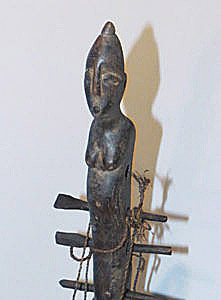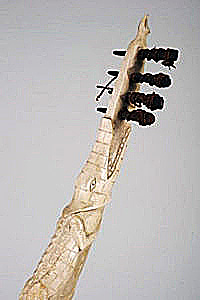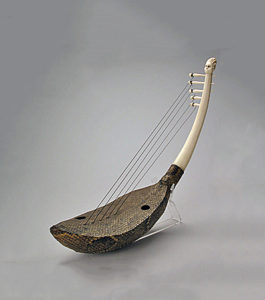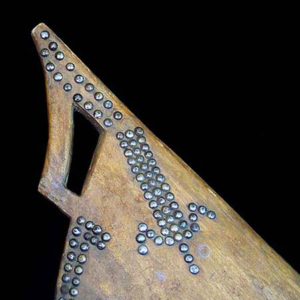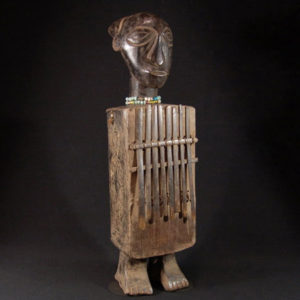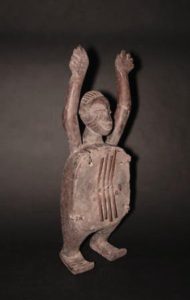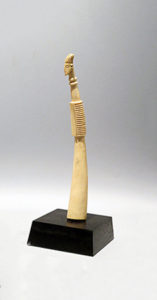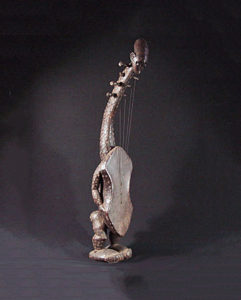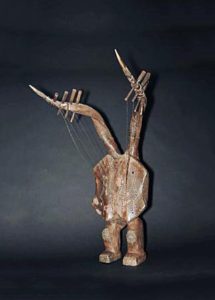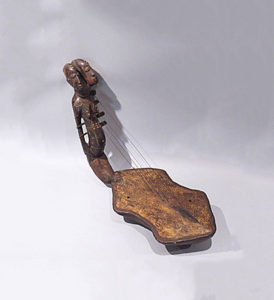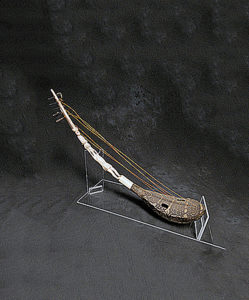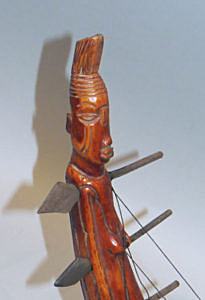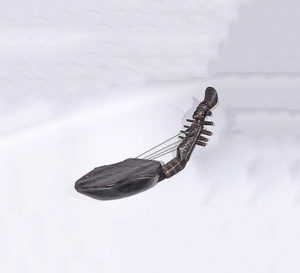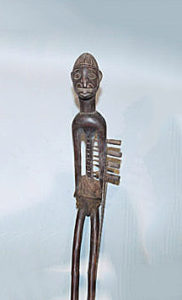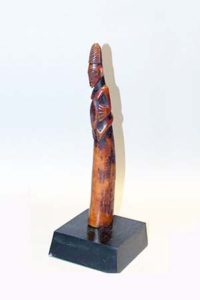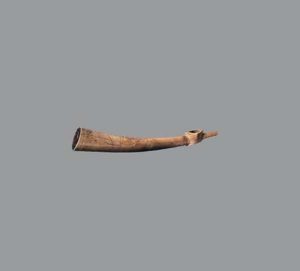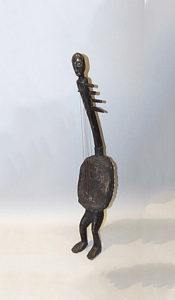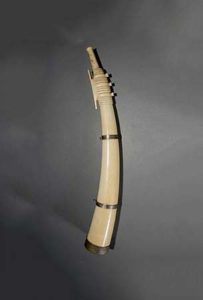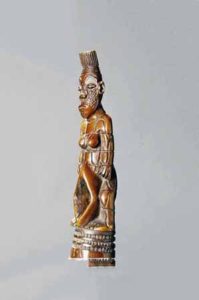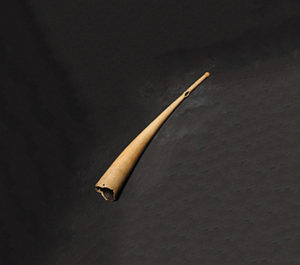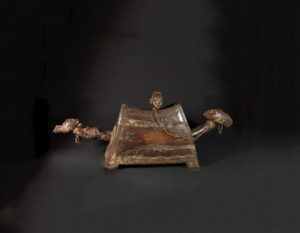Mangbetu
When the Mangbetu tribespeople left the Sudan in the middle of the 18th century, they re-located their kingdom in the north-eastern part of the Democratic Republic of Congo (formerly Zaire). Their social structure is not dissimilar to the other Zairean forest-based tribes where the men hunt and fish, while the women are left to cultivate the manioc fields. Ultimate authority over the 40,000 Mangbetu rests with a king whose sons govern the various provinces, which are divided into districts and villages. The Mangbetu tribes have been at war with their neighbors, the Zande since the 18th century. They continue to practice “lipombo” a binding of the head, wrapped so tightly during infancy that it creates a lifelong elongated form of the skull.
Mangbetu art was produced exclusively for the ruling class to enhance the prestige of the court and was secular in nature. Thus, it is not surprising that masks, which are usually associated with initiation ceremonies, were not produced. Wooden figures are believed to be ancestral portraits. Harps and trumpets that were used by court musicians were often adorned with sculpted human heads and decorated thrones and knives were also part of the royal regalia.
Sources:
Baquart, Jean-Baptiste. The Tribal Arts of Africa. New York: Thames and Hudson Inc.
Mangbetu – Art & Life in Africa – The University of Iowa Stanley Museum of Art (uiowa.edu)

